Puto Bumbong is a Filipino delicacy that’s traditionally served during the Christmas season in the Philippines. It literally translates to steamed glutinous rice (puto) cooked in bamboo (bumbong), and it’s a staple at my best friend’s house, where we gather for Noche Buena at midnight on Christmas Eve. The purple color comes from the mixture of sweet rice and black rice (pirurutong), but I’ve seen recipes that call for purple food coloring, which is obviously cheating! Puto bumbong is served with butter, sugar and freshly grated coconut on top. I asked my friend’s mom if she would show me how to make puto bumbong, and she was happy to oblige.

Cooking puto bumbong is fairly quick but preparing the rice is a three-day process. On the first day, you take a mixture of equal parts of sweet rice and pirurutong and soak it overnight. On the second day, you take the mixture and grind it in a blender. (In the Philippines, you’d traditionally use a grinding stone of some kind.) Then the mixture is placed in a cotton sack (like a flour sack) for another day in order to drain any excess water. Since it’s generally warm at Christmastime in the Philippines, you’d simply hang the bag outside and let gravity do the work. With the colder winters here in the States, better results are obtained by putting a heavy weight on the bag to force the excess water out.
The rice mixture should be ready the next day, and it should be moist, not dry. The next step is to use your hands to mix it up and break up any clumps.
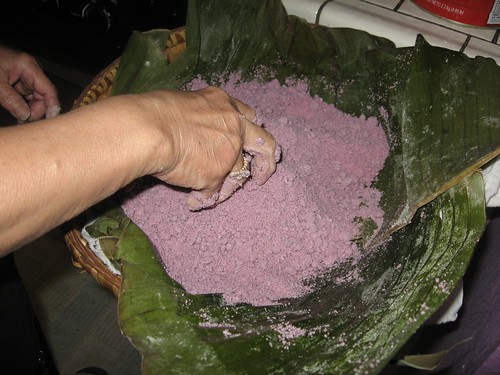
To cook the puto bumbong, you need a special steamer. This one has three holes on top so that the steam can escape and cook the puto in the bamboo. The cloth wrapped around the bamboo helps prevent burnt hands.
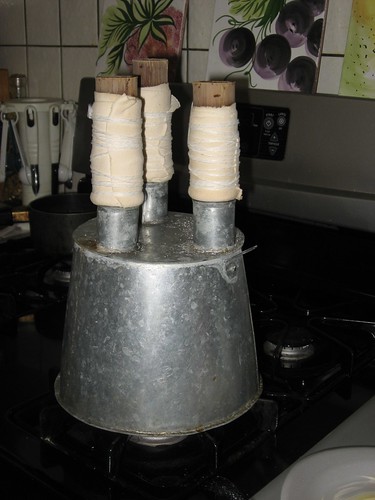
Simply fill up the bamboo with the rice mixture and put it on top of the steamer. You can tell when it’s done when the rice turns dark purple and kind of shrinks into the bamboo.
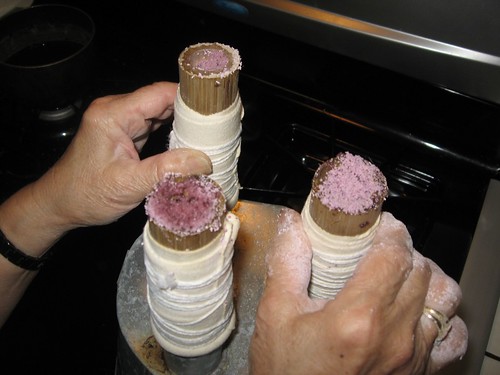
Before you remove the puto bumbong from the bamboo, hold the top of the bamboo over the steam to finish cooking the end that was farthest away from the steam.
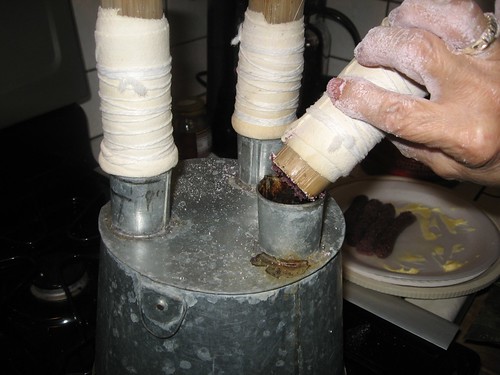
To remove from the bamboo, hold the bamboo in your left hand…then hit the pinky side of your left hand against your right palm by the base of your thumb. The puto bumbong should plop onto plate.

To finish, slather the puto bumbong with butter and then top it with freshly grated coconut and sugar (either white or brown). In the Philippines, puto bumbong is sold by street vendors after Mass during Christmas week and is wrapped in banana leaves so customers can take it with them. Since we normally enjoy these at home, we just eat it fresh from the steamer…no banana leaves required.
Thanks to my Tita Lety for showing me how this delicious Christmas treat is made. It’s always great going to their house on Christmas Eve for Noche Buena just a few hours after finishing our own Christmas Dinner.

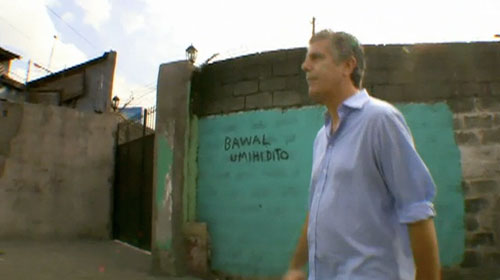
 As the No Reservations – Philippines episode gets set to air, Bourdain’s latest blog post boldly declares that the Philippines is No. 1 in his so-called “Hierarchy of Pork,” ahead of Bali and Puerto Rico.
As the No Reservations – Philippines episode gets set to air, Bourdain’s latest blog post boldly declares that the Philippines is No. 1 in his so-called “Hierarchy of Pork,” ahead of Bali and Puerto Rico.